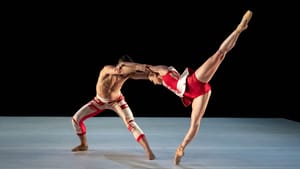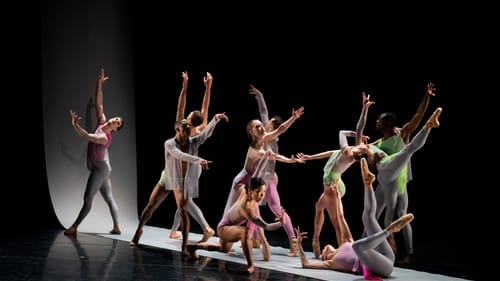Stay in the Loop
BSR publishes on a weekly schedule, with an email newsletter every Wednesday and Thursday morning. There’s no paywall, and subscribing is always free.
Unlikely fellow
BalletX presents choreographic fellow Katarzyna Skarpetowska in the 2019 Spring Series

The light’s only just starting to come back to Philly skies, but the 2019 Spring Series is underway at BalletX. For each of the past four years, the company has awarded a choreographic fellowship to an up-and-coming choreographer, providing a commission for a new work as well as mentorship from an established choreographer, who also creates a piece.
Katarzyna Skarpetowska seemed an unlikely fellow. She began her professional dance career with the Parsons Dance Company in 1999 (beating out Christine Cox, now BalletX's artistic director, for the job). In 2013, she retired from dancing for a career as a choreographer. She just made the cut for the fellowship (those eligible had completed their first professional commission within the past five years), but she felt she had more to learn.
Cy Twombly and toe shoes
Skarpetowska drew her inspiration for Off the Canvas from the untitled paintings of Cy Twombly’s Bacchus series. For her, the paintings reflected two worlds—the surface of those great red loops, plus something more personal churning underneath. The dancers performed on a canvas stretched across the stage (by lighting and scenic designer Mark Stanley) in shorts and peplum tops for the women and pants for the men, hand-painted red and canvas by costume designer Fritz Masten, to evoke the paintings.
The piece begins with the women of the company en pointe, precise and quick, almost Brownian in their movement around each other, their arms at their sides like dashes of paint. They join in circles and break apart again, while the ominous music from Adrian Klumpes’s Be Still album tightens the tension like crackling static. Later, the male dancers lift company member Roderick Phifer over their heads. He reaches as if trying to escape, and the dancers set him down, tossed between them, and leave him curled on the stage in a moment that seems to capture the rage and turmoil of the painting.
The piece moves between the modern-industrial feel of the Klumpes to the pure Baroque of Vivaldi’s Cello Concerti, where the dance flows like the music, sometimes more like a 17th-century ballroom than a 21st-century painting about rage. But perhaps we only see the rage for what it is against a contrasting calm.
Steep Drop—and what is that prop?
Fellowship mentor Nicolo Fonte closes the evening with a tone poem in dance. Steep Drop, Euphoric is inspired by the music of Ezio Bosso and Ólafur Arnalds: the pathos, the rise and fall of joy and sorrow. The costumes by Christine Darch reflect the mood with pastel colors. The shirts seem to float like wings on the men; tops with filmy panels do the same for the women as they combine in densely entangled formations.

More puzzling is the set piece, designed by Fonte with Mark Stanley: a narrow drape that hangs from the flies and curls in a scroll on the stage. As the dance progresses, the drape gradually unrolls on a diagonal across the stage, separating the dance into three parts: the action at the back of the stage, the action in front, and the action on the drape itself.
In one section of the piece, Chloe Perkes kicks the curled drape further down the stage; the other dancers join her and seem to pass her by, abandoning her. They wrap her in the draping and she is freed, and they raise her up on a tower of their support. The overall effect is of loss and sorrow, and I wondered what that drape dividing the stage is meant to represent—does it divide or bridge the dance? Was it the road of life or the River Lethe? It is significant, though, that I am still wondering.
Jookin in the middle
With heavier pieces to begin and end the program, we really needed something to cheer us up in the middle, and Lil Buck’s Express, with music performed by Jon Batiste, definitely raised our spirits. But I was a little disappointed. This is not Jookin per se, but a ballet en pointe with some of the basic Jookin steps included in the choreography. BalletX is a ballet company, after all—but I am a YouTube fan of Lil Buck and Memphis Jookin, and I hoped to see some of my favorite flourishes incorporated in the dance. Glides and slides may have required more time to master, but I was looking for toe spins and toe stalls. Alas, no. Stanley Glover is a standout, though, thoroughly convincing in the urban forms. I could have watched him forever.
Cox has said that she is recentering the company’s identity around its original premise—retire the socks ballets, go back to the toe shoe. I generally agree, and Lil Buck has worked with dancers en pointe before. But in this case, I think the directive works against them. Maybe, now that we are two years down the toe-shoe road, we could make an exception now and then.
Maybe you’re reading this and thinking, “I’m a new choreographer, and I could definitely do that!” If so, applications for BalletX’s 2019-2020 season choreographic fellowship are open until March 29, 2019.
What, When, Where
BalletX Spring Series. Choreography by Katarzyna Skarpetowska, Lil Buck, and Nicolo Fonte. Through March 17, 2019, at the Wilma Theater, 265 S. Broad Street, Philadelphia, PA. (215) 546-7824 or balletx.org.
The Wilma offers wheelchair-accessible seating in two areas. Call the box office in advance to reserve.
Sign up for our newsletter
All of the week's new articles, all in one place. Sign up for the free weekly BSR newsletters, and don't miss a conversation.

 Camille Bacon-Smith
Camille Bacon-Smith